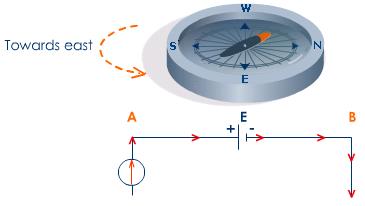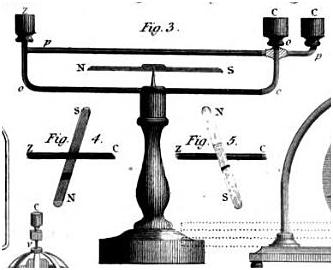Development of the Galvanometer
History and Use

At the beginning of the 19th century, electricity and magnetism remained two separate and distinct subjects, as none had yet discovered a link between the two. In 1820, this all changed with Oersted of Copenhagen’s celebrated discovery that a current-carrying wire exerts attractive and repulsive forces on a magnetic needle in close proximity to it. This needle always rotates to be tangential to the wire. Here, for the very first time, electricity and magnetism were shown directly acting upon each other. He published the discovery on July 21, 1820 in a pamphlet titled “Experimenta circa efficaciam conflictus electrici in acum magneticam” which can be found here in Schweigger’s “Journal fur Chemie und Physik“, on page 275. The pamphlet attracted the attention of the entire scientific world and catapulted Oersted to international fame (The Rise of the Electrical Industry During the Nineteenth Century, by Malcolm MacLaren, p130-1). Here is a translated excerpt from the pamphlet.

This is Oersted’s Law Apparatus. Click on it for a description and explanation.
Ampere recognized Oersted’s discovery’s potential for indicating the presence of a current in a wire. Thus, he suggested an instrument for just such a purpose, one he termed the galvanometer. Fundamentally, a galvanometer simply consists of a wire and a needle. When a current passes through the wire, the needle deflects, and the degree of deflection is an indication of the strength of the current. He also described the rules governing the direction of the needle’s deflection (what is now known as the right-hand rule). Here is his original memoir in the Annales de Chimie et de Physique, vol. 15, on page 59. This is a translated excerpt.